Dear Sketchbookers,
It is my great pleasure to share with you the new Portfolio Diaries featured artist: The one and only
. I recently started collaborating with Emma and it has been one of the coolest things of my year! I am so glad I can show you what she does and how she is rebuilding her portfolio. A bit about Emma:Emma Carpendale is an illustrator and artist based in rural Northamptonshire, UK. Her work is inspired by the magic of the natural world, particularly birds and woodland creatures and the timeless power of storytelling to deepen our connection with nature.
She is passionate about children’s books and literacy, and works with a UK charity to help bring book events and author visits to local schools.
Emma runs The Creative Flock, a welcoming membership and community space where she shares her experience in art, illustration, and living a creative life. Together, members explore seasonal themes through live drawing sessions, curated resources, and a supportive space for conversation and inspiration.
When she’s not at the drawing board, Emma can often be found wandering the countryside with binoculars in hand, sketching, or photographing natural textures and details.
I love how Emma is now planning her substack around seasons, if you want to know more about it, you can see it here:
If you want to check her current online portfolio, click on the following link:
And her Instagram:
Now to the interview!
Why did you choose a digital portfolio over a physical one?
Back when I was studying at art college and university, having a physical portfolio was essential. We invested a lot of time, care, and money to create high-quality, professional portfolios to take to meetings with art directors or interviews. At one point, I carried around an A1 portfolio (almost a metre squared) which I lugged on and off London’s underground trains. It was quite a challenge! I was so relieved when websites and online portfolios became the accepted norm for presenting artwork to potential clients. Though I kept a physical portfolio for a while, I gradually downsized, from A1 to A2, and then to a much lighter A3. Nowadays, I rely almost entirely on my online portfolio to showcase my work, but I still keep my trusty A3 folders in the studio, just in case they need to be dusted off.
2. Which platform or tools did you use to build your portfolio (e.g., WordPress, Adobe Portfolio, Behance)?
I use Squarespace, which has been the easiest website builder I’ve worked with so far. In the past, I used Behance and built a site with WordPress. While those platforms had their advantages, affordability being the main one, Squarespace is much more user-friendly and intuitive, saving me a LOT of time.
For example, when I created my old portfolio site on WordPress, I had to invest significant time in research and learning. I also ended up paying for technical help. And when issues arose, I had to troubleshoot them myself, time that would have been better spent on my creative work.
In contrast, Squarespace’s site builder is simple and intuitive. It’s difficult to break your site accidentally, and the support options are very helpful. I also integrate a drop-shipping service with my print store. While that setup isn’t quite as seamless as I’d like, it’s still manageable.
Can you show us your favorite portfolio piece?:
My favourite portfolio piece is Spirit Fox, it has always received praise, and I was thrilled to place third in the Mammal Illustrator of the Year 2025 competition with this entry. What I like most about it is its simplicity; it captures a sense of the natural world’s power and magic. Originally, I created it in my sketchbook inspired by a photo of a wild fox. I wanted to convey its magical and majestic presence, and I feel I succeeded. It’s a piece I’d love to explore further, perhaps developing a series focused on British mammals.
What’s the biggest challenge of maintaining a digital portfolio?
When I was building my first digital portfolio, the hardest part wasn’t choosing the artwork, it was the tech! I used to struggle with things like glitches on my WordPress site and not knowing how to fix them, which was such a headache. Thankfully, that’s no longer an issue now that I use a simple, reliable website builder with built-in tools. These days, the real challenge is deciding what to keep and what to let go of. That’s where getting a fresh or critical eye can be incredibly helpful. I’d recommend asking someone with experience in your specific area, whether it’s children’s book illustration, fine art, photography, or something else, to give you honest feedback. It can make a huge difference.
How does having a digital portfolio impact how clients or employers perceive you?
I think having a digital portfolio is really important for visual artists and illustrators, it shows your commitment to your craft and a strong sense of professionalism. So it’s worth taking the time to get it right - make sure your images are high quality, your layout is clean, and navigation is easy. Double-check for typos, test all your links, and be clear about how people can work with you or get in touch. A digital portfolio helps shape how potential clients, art directors, or editors see you, it builds trust, lets them get a feel for your style and personality, and can make all the difference when they’re deciding who to hire or collaborate with.
What advice would you give someone creating their first digital portfolio?
Start by gathering the work you’re most proud of, pieces that really showcase your strengths and the kind of work you want to be known for. Make sure the quality of your images does your work justice - scan pieces cleanly or take good photos (and don’t be afraid to hire a photographer if needed). Once you have everything together, lay it out, either physically on a table or digitally, and look at how the pieces work as a collection. Group them in a way that makes sense and think about the flow from a client’s perspective: does it tell a clear story?
If you’re working with digital images, I highly recommend using a tool like Miro (a digital whiteboard). It’s a great way to visually organise and experiment with the order of your work, and it gives you a feel for how your portfolio will look online. Remember, physical pieces can look quite different once they’re scanned and viewed on screen, so this step really helps. In fact, in the video that goes with this post, I share how I use Miro to map out my portfolio and decide which pieces to include. Big thanks to for introducing me to it! To check Miro:
If you were to start over, what would you do differently?
I’m in the middle of reworking my portfolio at the moment! I’m lucky to be working with a creative mentor to help guide the process. We’re focusing on my main interests as an artist and illustrator, and the kind of work and clients I’d love to attract. One of the big things I need to improve is having a clearer message about who I am, what my strengths are, and how I can help the people I work with. I’m also going through and filtering out older pieces and areas that no longer reflect where I’m heading, which is definitely the hard part! But having a mentor to help me be objective (and a bit ruthless) is making all the difference.
One final bit of advice:
While your digital portfolio should be high quality, it’s important to remember that, like your creative work, it’s always a work in progress. As your style, skills, and interests evolve, your portfolio should evolve too. Focus on showcasing your best work, but don’t be afraid to revisit it regularly — update it, refine it, remove anything that no longer fits, and add new pieces that reflect where you’re headed.
It is such a beautiful body of work, right? I love the details and the mood every single piece has. I am so inspired after reading and watching Emma talking about her work. Let’s wish her good luck with the remake of her online portfolio:
Other Posts from the Portfolio Diaries series:
Until soon friends,
Citla


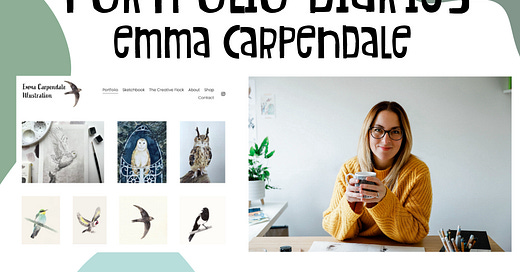


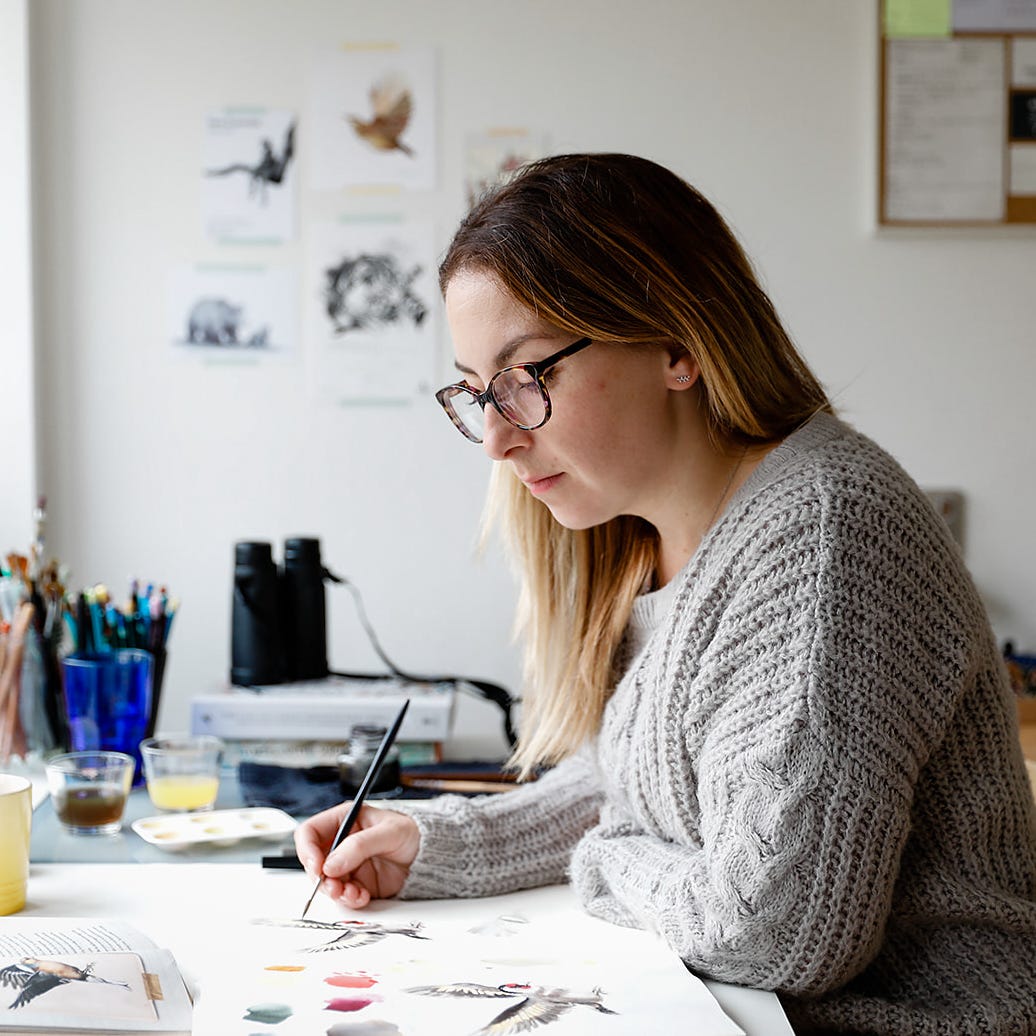

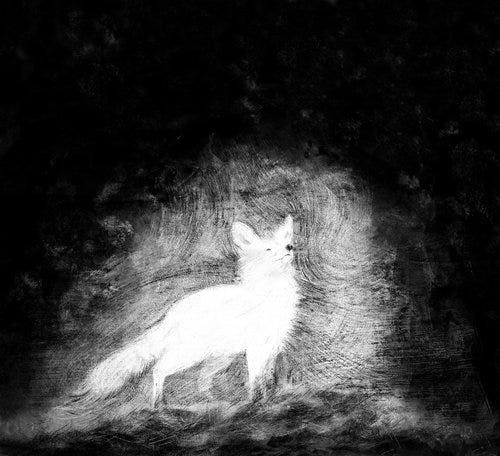





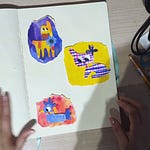


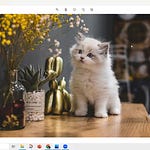


Share this post